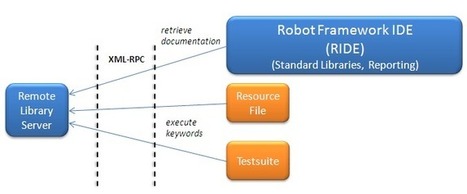Our first three posts will give an introductory overview of the RF, laying the conceptual foundation for the remainder of the series. Therefore these three articles will not concentrate on practical, hands-on examples or instructions, but instead have a more theoretical feel. Moreover, several of the fundamental concepts laid out in them, are applicable not only to the RF, but to most (if not all) test automation frameworks. Consequently, these first three posts target those that miss a basic understanding of test automation (frameworks) in general and/or of the RF in particular. The remainder of the series will be also of interest to more seasoned automation engineers.
We will first look into the basic architecture that underlies the framework and discuss the various components that it is being comprised of. In the second post we will discuss the nature of the keyword-driven approach that the RF entails. The third post will detail a typical test automation work flow.
For a first-hand experience of the pros and cons of the RF, you might want to join the first Robot Framework meetup in the Netherlands.



 Your new post is loading...
Your new post is loading...













